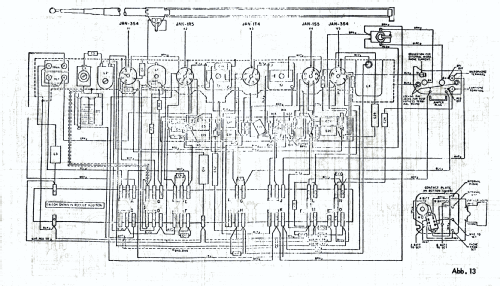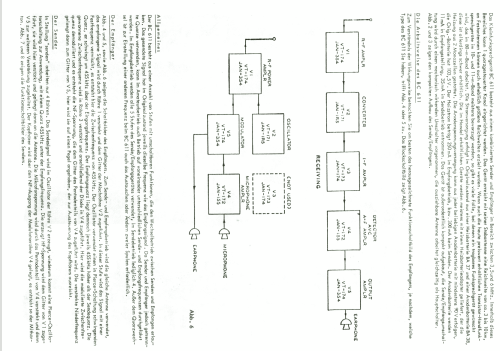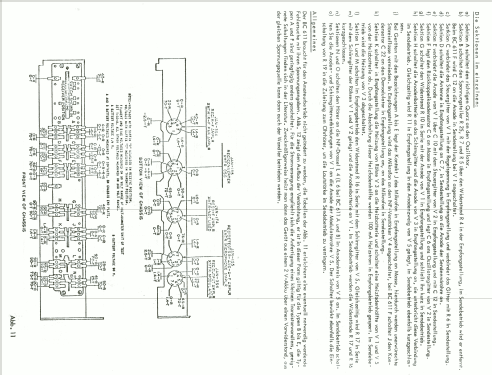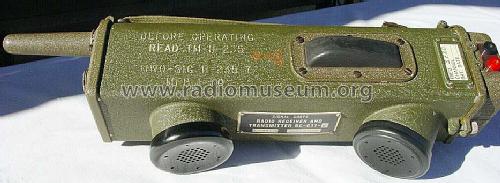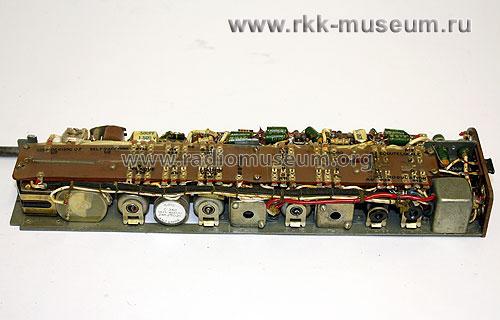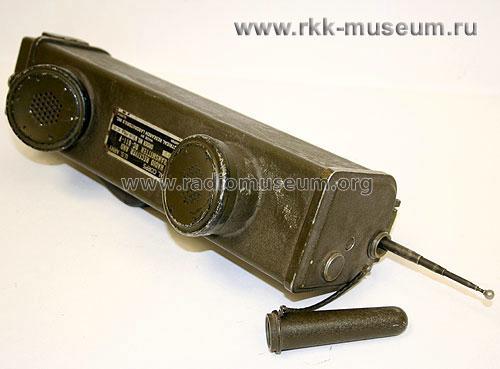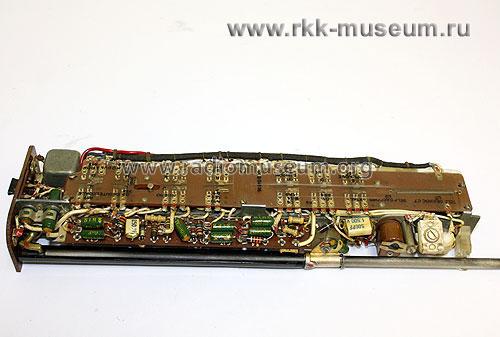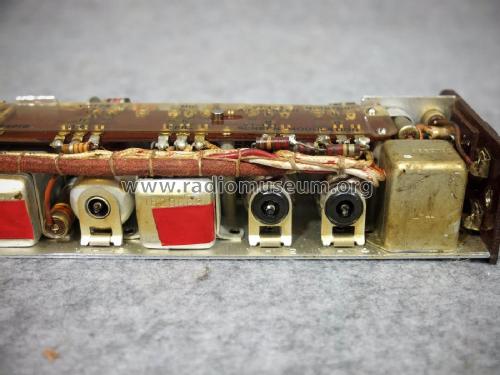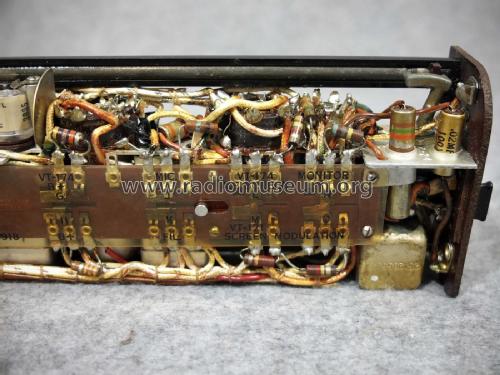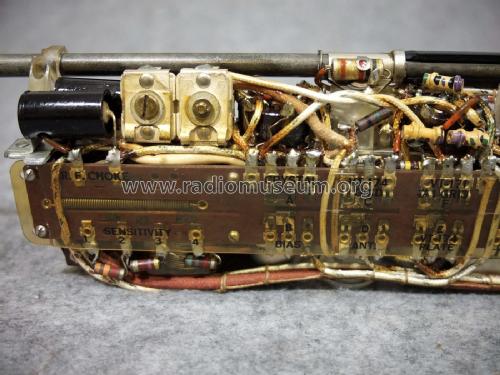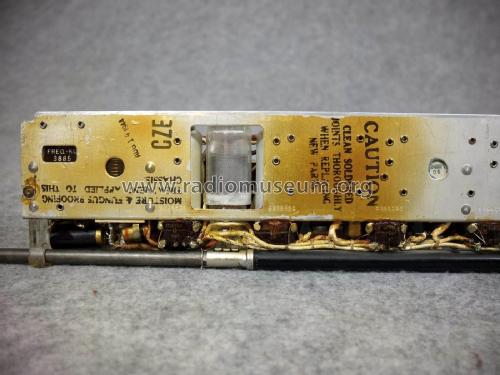SCR-536 Radio Set BC-611 (Variants A, B, C, D, E and F)
MILITARY U.S. (different makers for same model)
- Pays
- Etats-Unis
- Fabricant / Marque
- MILITARY U.S. (different makers for same model)
- Année
- 1941–1956
- Catégorie
- Émetteur-récepteur militaire
- Radiomuseum.org ID
- 71779
Cliquez sur la vignette du schéma pour le demander en tant que document gratuit.
- No. de tubes
- 5
- Principe général
- Transceiver (poste récepteur/émetteur combiné); FI/IF 455 kHz
- Gammes d'ondes
- Bandes en notes
- Tension / type courant
- Piles (rechargeables ou/et sèches) / 1.5/103.5 Volt
- Haut-parleur
- HP dynamique à aimant permanent + bobine mobile
- Matière
- Boitier métallique
- De Radiomuseum.org
- Modèle: SCR-536 Radio Set BC-611 - MILITARY U.S. different makers
- Forme
- Formes diverses décrites en notes
- Dimensions (LHP)
- 80 x 320 x 90 mm / 3.1 x 12.6 x 3.5 inch
- Remarques
- The first ever made AM "Handy-Talky", for the US-Service. One channel xtal-operation in the range 3.5 - 5.995 MHz. Variants -A to -F. Another part of SCR-536 is the Box BX-49, containing components for 12 different frequencies or "channels". In chest CH-233 all 50 official channel-components were multiple available in 2 boxes. After channel-changing, realignment with Test Set IE-17 was needed. The official channel 3885 kHz was often used by Amercian hams, but in Europe suitable x-tals for lower frequencies had to be applied. The given weight is inclusive the 0,75 kg. batteries.
See also the Swiss Army variant FOX SE-100, the French variant or the Case CH-312 from Munston.
- Poids net
- 2.5 kg / 5 lb 8.1 oz (5.507 lb)
- Schémathèque (1)
- -- Original-techn. papers. (TM11-265 dated 1945. TM11-4019 dated 1945.)
- Schémathèque (2)
- The Surplus Handbook - Receivers and Transmitters (page 31-32)
- Auteur
- Modèle crée par d'un membre de D. Voir les propositions de modification pour les contributeurs supplémentaires.
- D'autres Modèles
-
Vous pourrez trouver sous ce lien 408 modèles d'appareils, 360 avec des images et 215 avec des schémas.
Tous les appareils de MILITARY U.S. (different makers for same model)
Collections
Le modèle SCR-536 Radio Set fait partie des collections des membres suivants.
Musées
Le modèle SCR-536 Radio Set peut être vu dans les musées suivants.
Contributions du forum pour ce modèle: MILITARY U.S.: SCR-536 Radio Set BC-611
Discussions: 2 | Publications: 3
Die Entwicklung begann 1941 und lag in den Händen der Fa. Motorola. Siehe auch GFGF-Funkgeschichte Nr. 140, Seite 279ff. (Nov./Dez. 2001).
Eilert Menke, 18.Jun.04








